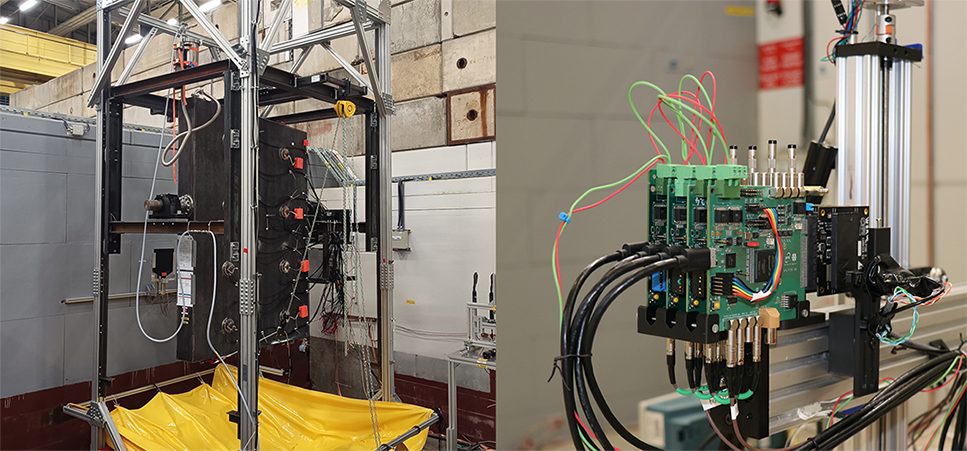On 22 March, the East Area kicked off the test-beam season with the ALICE and SHiP experiments.

As spring arrives in the northern hemisphere, the CERN accelerator awakens and begins the data-taking and test-beam seasons. CERN’s East Area, which receives the beam from the Proton Synchrotron and serves now as a test-beam facility, begins the test-beam season. Researchers from CERN experiments and other external users from all over the world exploit the PS proton beam to test their experimental set-ups and detector components.
This year, the ALICE and Search for Hidden Particles (SHiP) experiments start the test-beam season with projects that were recently approved by the CERN Research board on 6 March: The new vertex detector ITS 3 and forward high-resolution calorimeter called FoCal from the ALICE experiment and the now approved SHiP experiment tests a prototype of their liquid scintillator surrounding background tagger.
At the T9 beamline, the just recently approved SHiP experiment tests a prototype of their liquid scintillator Surrounding Background Tagger, which will surround the experiment’s decay region and will be used to discriminate against muon- and neutrino-induced backgrounds. The researchers are testing the detector response to minimum ionizing particles with a large 4-cell detector prototype. During the winter shutdown, the detector remained on site, enabling a measurement of the detector’s exposure to cosmic particles. Furthermore, this allowed the researchers to monitor the aging of the detector and to already implement additional improvements to the design. “Since 2017, we have been conducting test beam exposures at the CERN PS and SPS, and DESY with increasingly sophisticated detector prototypes. It is incredible to see the progress,” says AnnikaHollnagel (University of Mainz), who co-leads this test campaign.
On the next test-beamline T10, the ALICE collaboration tests their new vertex detector (ITS3), which will replace parts of their current inner tracking system. This will reduce the material in the region close to the interaction point and improve the tracking precision, thereby advancing the ALICE physics programme in the next decade.
Aimed at data taking from 2029 onwards, the FoCal is a highly granular silicon-tungsten electromagnetic calorimeter combined with a conventional sampling hadronic calorimeter to detect particles such as electrons and hadrons, which leave their energy in the respective calorimeter. It will be located outside the ALICE solenoid magnet, 7 m away from the ALICE interaction point. In 2022, the North Area’s H6 beamline was used in 2022 to characterise the full FoCal prototypes by scanning the energy up to 400 GeV. Now, the 10 GeV proton beam coming from the Proton Synchroton is being used to concentrate on mid- to low-energy ionising particles that pass through their set of detectors to verify the efficiency of their installations. “The FoCal prototype detectors tested with beams in the CERN accelerator complex worked quite well, demonstrating their performance in line with expectations from detector simulations,” mentions Tommaso Isidori (University of Kansas), head of the test campaign.
These installations would not have been possible without the many teams from the BE-EA and other ATS groups who prepared the beamlines and provided the technical infrastructure to provide a smooth operation.
